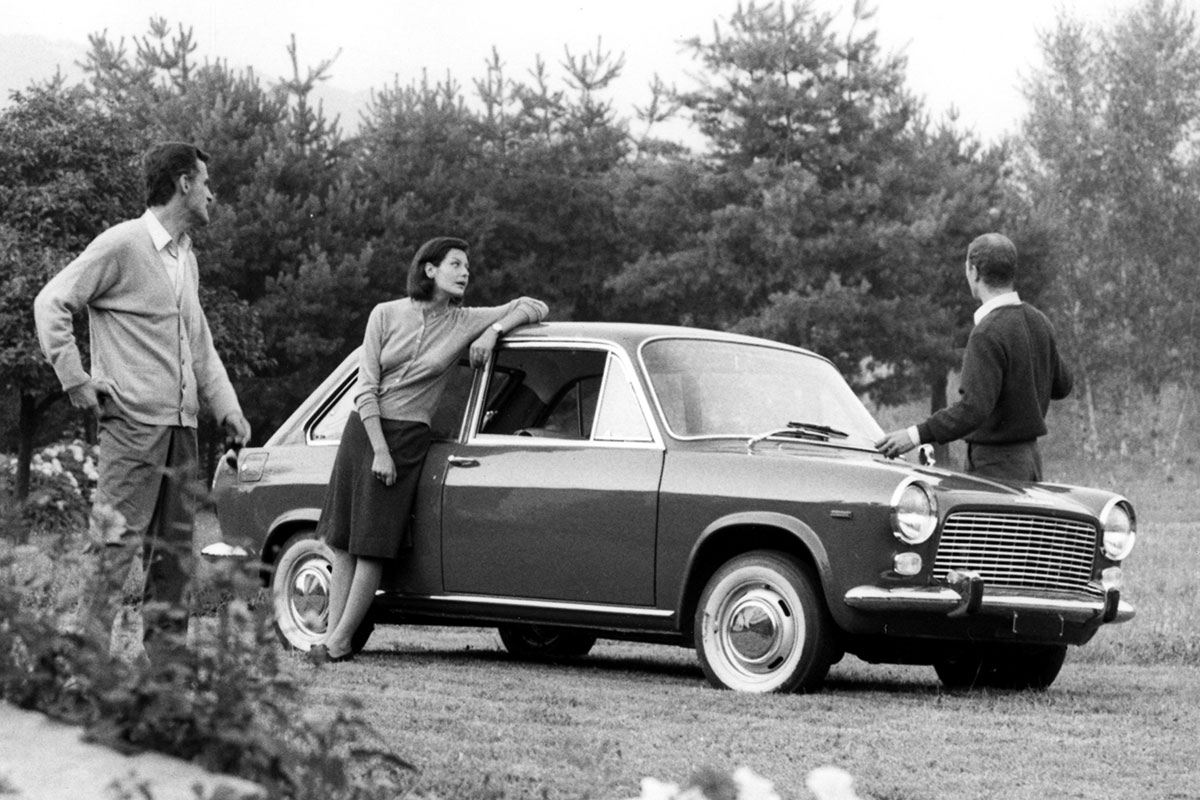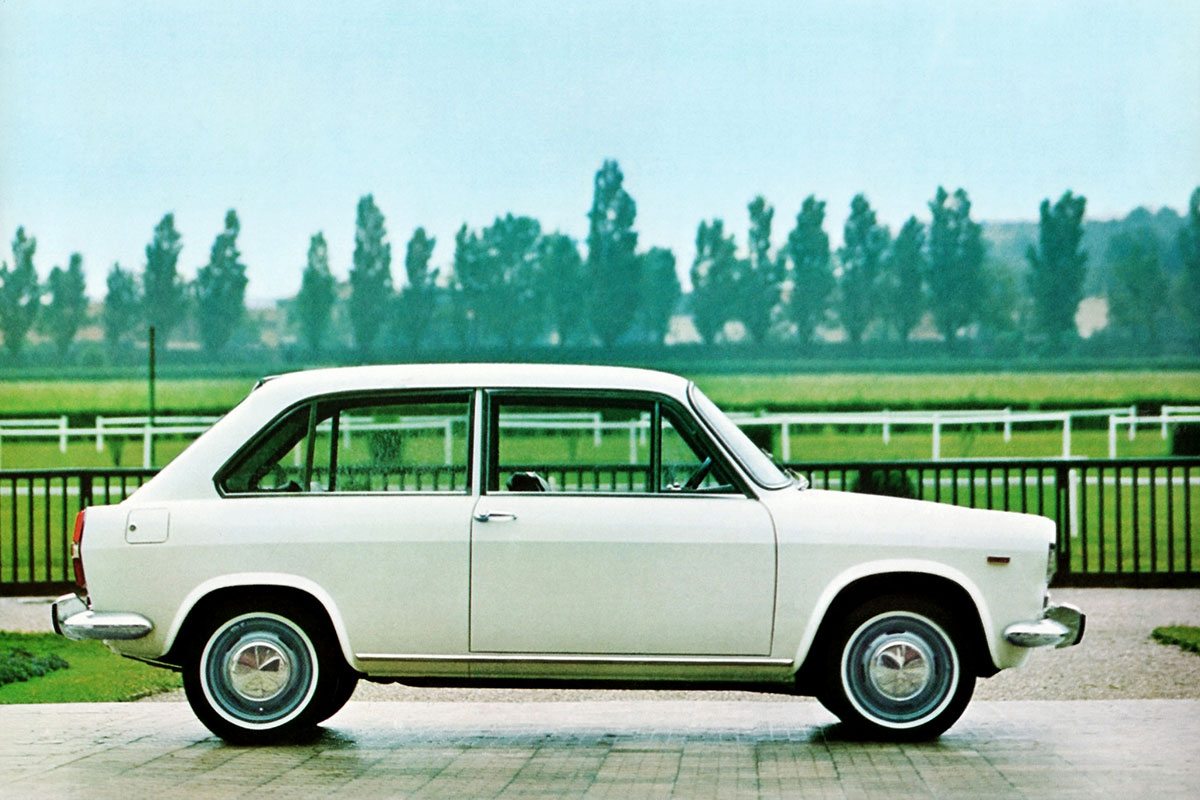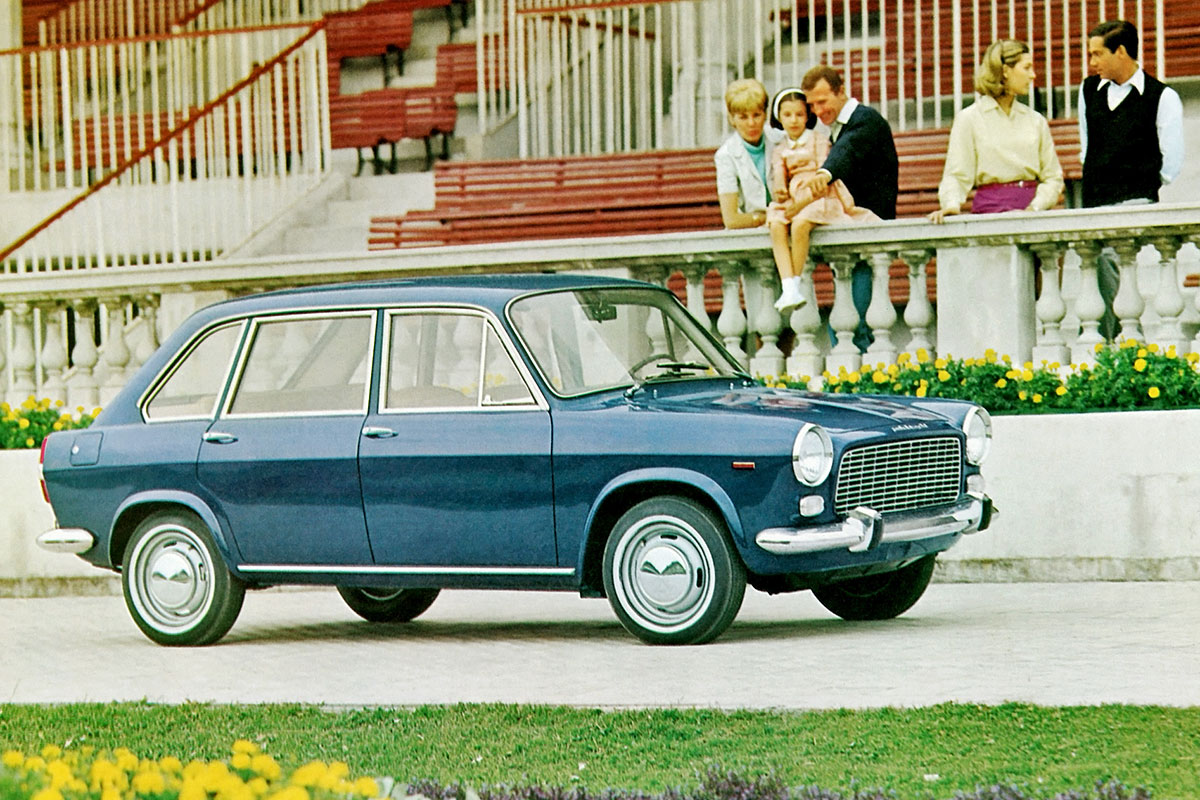The question of which was the world’s first production commercially available hatchback has been raging for years. Citroën can justifiably claim that it was the first to offer such a vehicle, when it launched the Traction Avant Commerciale way back in 1938. A few thousand were made, but the chances are that you’ve never seen one as survivors are rare. The same goes for the Kaiser Vagabond, which was launched in 1949 and sold in small numbers before it was discontinued just two years later.
A friend of mine owns the sole Triumph Herald hatchback prototype made, and I recently told its story in video form on my Below The Radar YouTube channel. The film has led to lots of people giving their opinions on which was the first production hatchback. Suggestions have included the Renault 16 (1965), Volkswagen Golf (1974) and the Renault 5 (1972), but all of these were beaten by the Austin A40 (1958) and the Renault 4 (1961). However, it’s the now-forgotten Autobianchi Primula that can claim to have created the template for small family hatchbacks the world over.
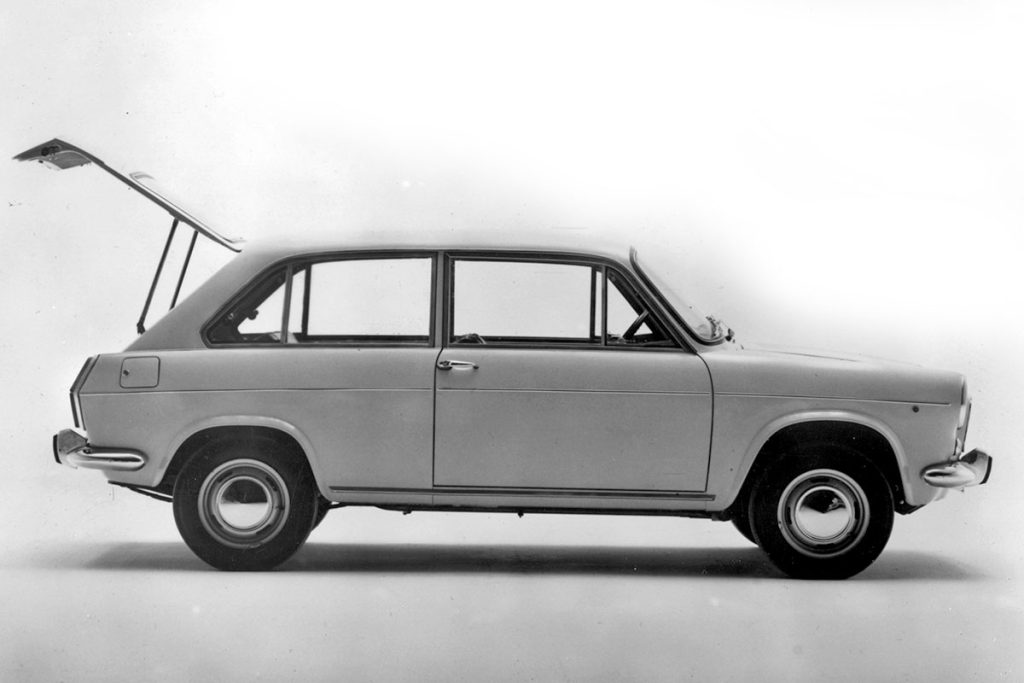
When the Autobianchi Primula burst onto the scene in 1964, it was unique in featuring a hatchback configuration and a transversely mounted water-cooled engine that drove the front wheels – just like huge-selling family hatchbacks such as the Ford Fiesta, Honda Civic, Peugeot 205 and Fiat Uno. Plus the VW Golf and Renault 5 of course. What the Primula also pioneered was the fitment of an end-on gearbox; BMC’s front-wheel drive cars had a gearbox sitting in the engine’s sump, and Autobianchi’s solution was more efficient, which is why over the next decade the Primula’s mechanical configuration would be adopted almost universally.
Fiat had set up Autobianchi in collaboration with Bianchi and Pirelli, way back in 1955. With the market awash with small hatchbacks today, it’s hard to image a world without these practical carry-alls. But when Fiat wanted to launch a new type of family car in the early 1960s, it was so worried that the car would be a failure, that it opted to sell it under the Autobianchi brand, so that the Fiat name wouldn’t be tarnished should it prove a flop. Bearing in mind the Mini and 1100/1300 had been a huge success for BMC, launching a small front-wheel drive family car doesn’t seem so crazy now, but back then Fiat was concerned that its new small hatch might disappear without trace.
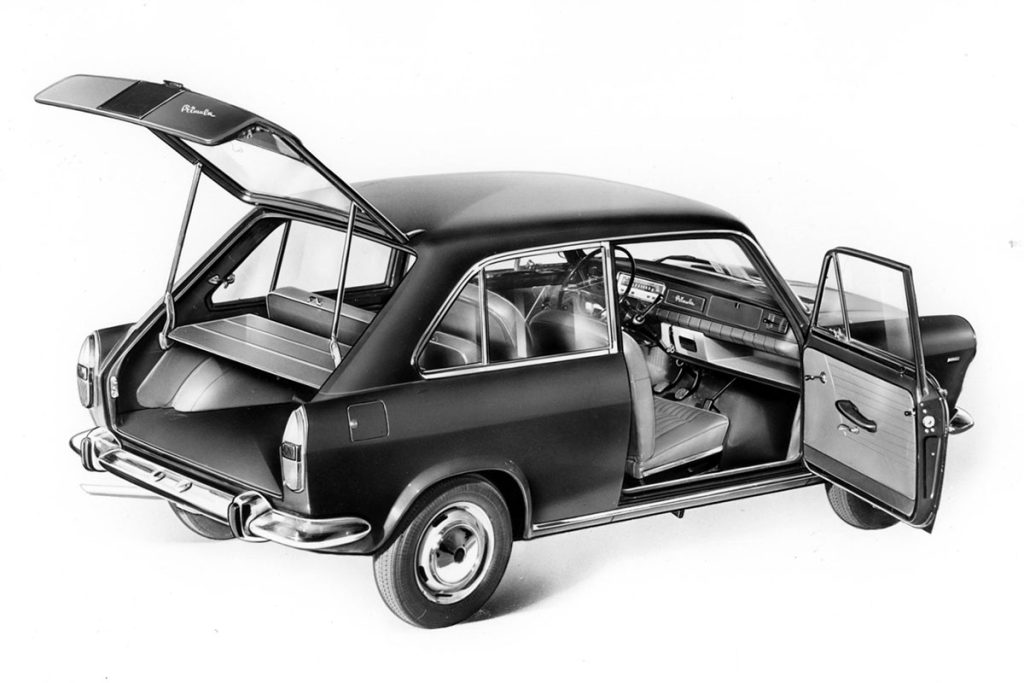
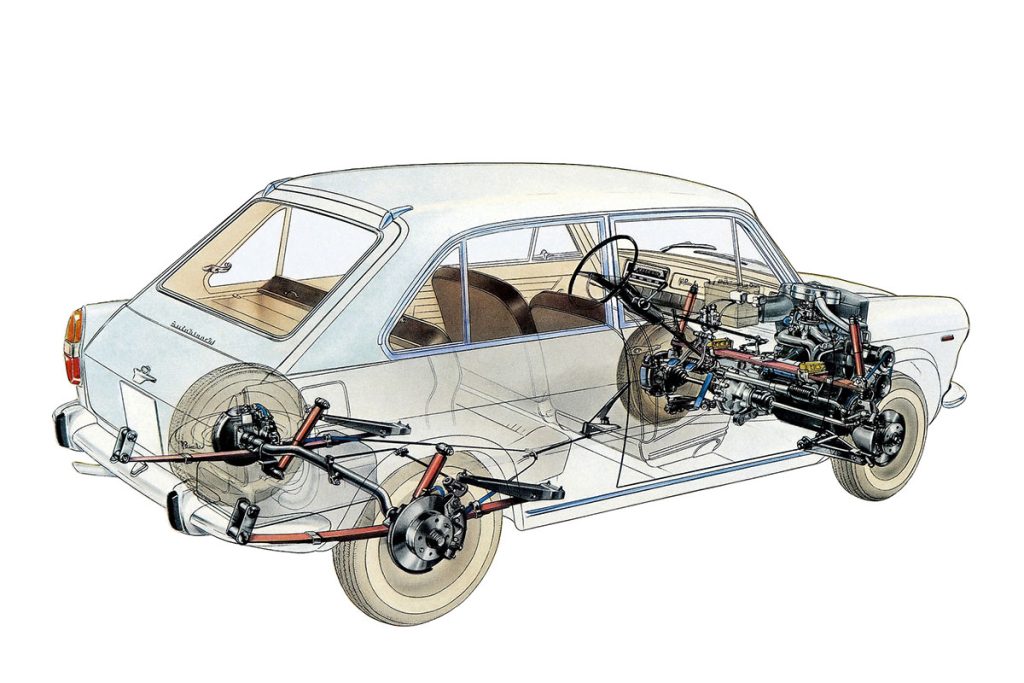
The man behind the Primula was Fiat’s design supremo Dante Giacosa, who wanted to move away from rear-engined cars such as the 500, 600 and 850. As early as 1947 he had come up with a design for a 570cc transversely mounted four-cylinder engine that drove the front wheels, but he couldn’t work out how to fit in an efficient transmission. That project was parked, but Fiat revisited the formula at the end of the 1950s, only to struggle once more with the gearbox.
With ultra-conservative BMC having pipped Fiat to the post with a mass-market front-wheel drive family car (the Mini, in 1959), only to then launched the 1100 in 1962, Giacosa was determined to get a front-drive car into production for Fiat. The key was in developing a more compact clutch arrangement which allowed the end-on gearbox to fit into the engine bay. Cheaper and more efficient than BMC’s in-sump solution, the new transmission was genuinely a game changer.
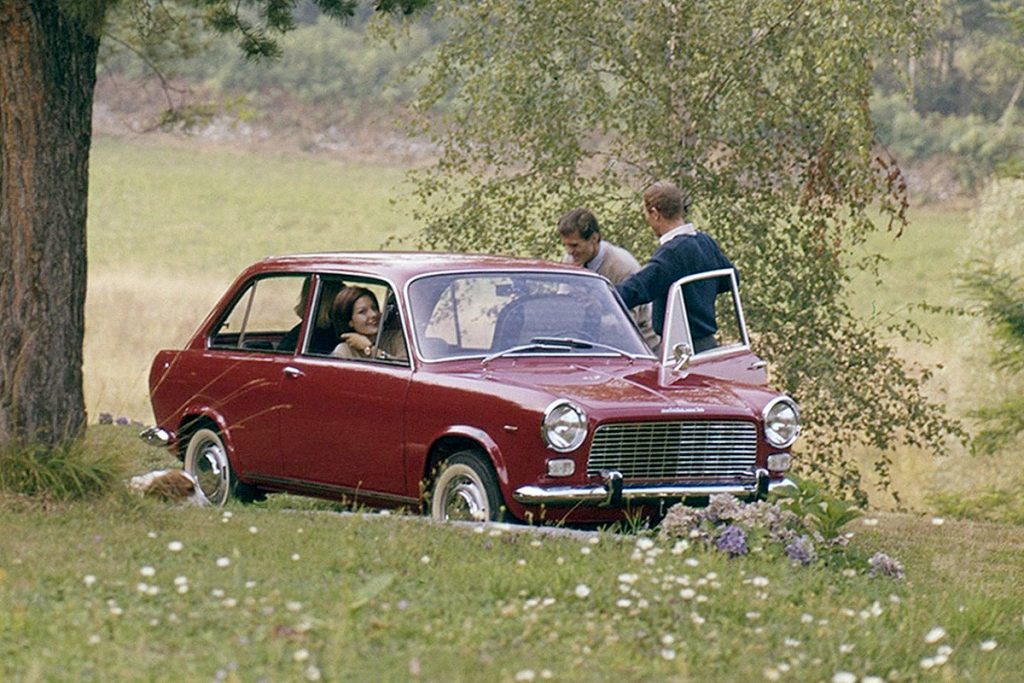
It wasn’t just the running gear that would mark the Primula out as a pioneer though, because Giacosa also decided that a three-door hatchback would provide the perfect blend of style, usability and affordability. Launched at the autumn 1964 Turin Salon in three-door form only, two and four-door saloons arrived soon after, along with a five-door hatchback in 1966.
In the nose was a 59bhp 1221cc four-cylinder engine, which was uprated to a slightly hotter 62bhp (courtesy of a twin-choke carburettor) for the four- and five-door editions. For those who wanted even more, there was a 65bhp Touring-designed coupé with a slightly lower roofline than the other models. With disc brakes all round, a sealed cooling system and a chassis devoid of grease points, the Primula really did blaze a trail.
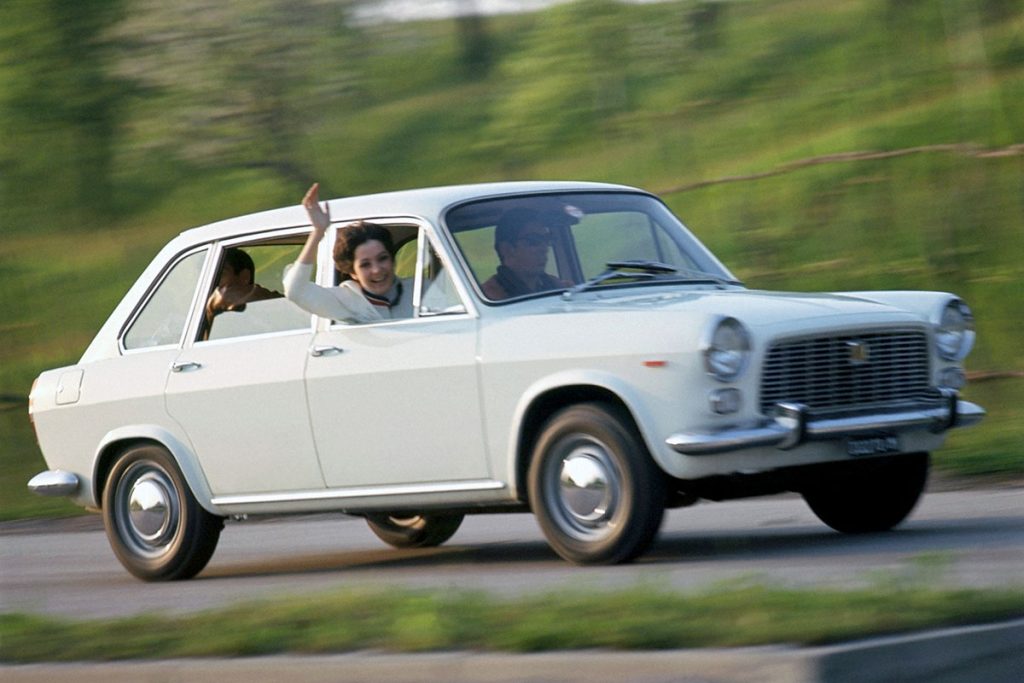
Fiat needn’t have worried about the Primula being shunned in the showroom; around 80,000 were made in a production run that lasted right up to 1970. By that point the engine had been updated to the 65bhp 1197cc unit seen in the Fiat 124, which came in 75bhp 1438cc form in the more sporting Primula coupé.
Coming second in the 1965 European Car of the Year (beaten by the BMC 1800 ‘Landcrab’), the Primula was brilliantly designed and engineered, but terribly rustproofed, just like all of its contemporaries. As a result, it’s reckoned that there are just a few dozen survivors across Europe, most of them in Italy. For such a pioneer, the Autobianchi Primula deserved to survive in much greater numbers and enjoy more recognition.
Read more
Concept Cars That Never Made The Cut: Fiat 850 City Taxi
Your classics: Ian Jephcott and his 1985 Alfa Romeo Arna
Cars That Time Forgot: De Tomaso Longchamp




